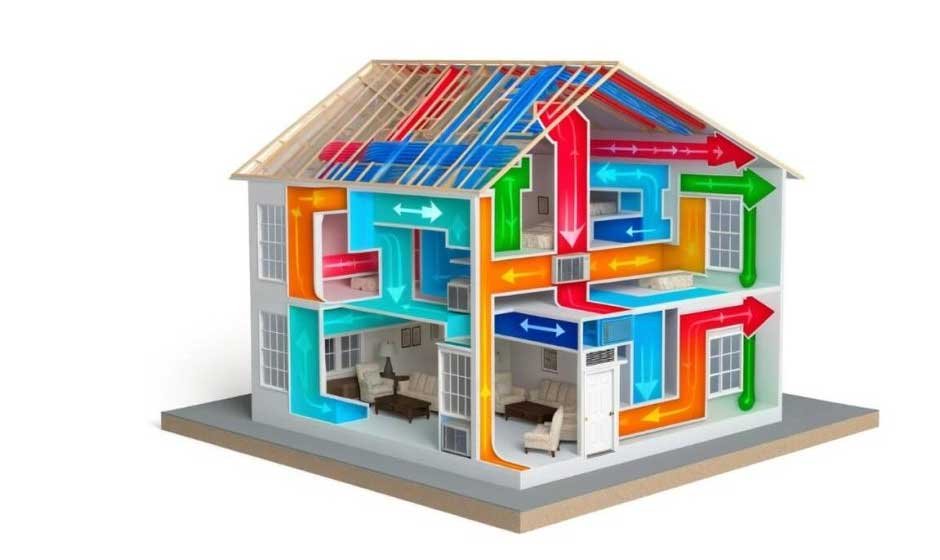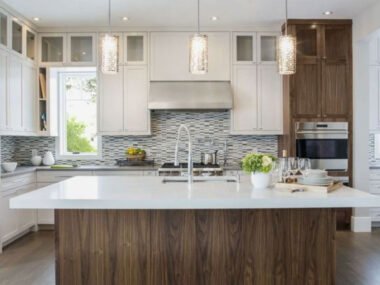Creating a comfortable living environment is more complex than simply setting a thermostat. A one-size-fits-all heating and cooling solution is often inefficient and inconsistent in modern homes, especially those with multiple levels or sprawling layouts. This is where custom climate control systems come into play, providing tailored comfort for each zone within a home. Multi-zone HVAC design allows individual areas to maintain distinct temperatures, optimizing comfort and energy efficiency. This approach is especially valuable in homes with extensive square footage, vaulted ceilings, sunrooms, or finished basements, where heat distribution can be uneven. A thoughtfully designed multi-zone system adjusts to the home’s unique architecture and the daily habits of its residents, ensuring that energy is used where it’s needed most. With the proper planning and installation, climate zoning not only enhances comfort, it also helps reduce utility costs over time and supports environmentally responsible energy use.
Breaking Down the Design and Technology Behind Zoning
How Zoning Elevates Comfort and Efficiency
Zoned systems divide a home into separate areas, each served by individual thermostats and connected through dampers within the ductwork. These dampers open and close as needed to regulate the airflow to specific parts of the house. This allows homeowners to fine-tune the temperature in different spaces based on usage, time of day, or personal preference. For instance, a guest room that’s rarely used can be kept cooler in the winter or warmer in the summer to conserve energy, while a frequently used living room maintains ideal conditions. This level of control enhances comfort while minimizing unnecessary energy waste. A professional HVAC contractor will first assess the structure of the home, examining insulation, layout, window orientation, and ceiling height to determine how to segment zones effectively. The contractor will then design a plan that aligns with the residents’ architecture and lifestyle, ensuring a personalized result that balances performance and efficiency.
Design Considerations for Effective Multi-Zone Systems
Creating an efficient multi-zone system begins with an in-depth evaluation of the home’s layout and how each area is used. Bedrooms, living areas, kitchens, and home offices often require different temperature settings depending on occupancy patterns and time of day. HVAC professionals must also consider how heat rises, how sunlight affects certain rooms, and how ventilation works in areas like basements or attics. These factors help determine where zones should be established and what equipment is required to manage them. Advanced zoning setups often incorporate smart thermostats that allow remote control and scheduling via mobile apps, giving homeowners convenience and greater insight into their energy use. Depending on the home’s design, separate air handlers or ductless mini-splits may be recommended for specific zones, especially where existing ductwork can’t accommodate expansion. These decisions are all influenced by a commitment to maintaining even airflow, system durability, and long-term operating efficiency.
Technology Integration for Seamless Control
Modern multi-zone systems benefit significantly from the integration of smart technology. Thermostats today do more than adjust temperatures—they learn user habits, respond to voice commands, and track energy consumption trends. Homeowners can program zones based on daily schedules or let adaptive algorithms manage comfort levels automatically. Sensors throughout the home detect temperature changes and occupancy, fine-tuning airflow in real-time. This responsive control system increases convenience and reduces wear on HVAC equipment by avoiding unnecessary usage. Wireless systems are advantageous in retrofitting older homes where extensive rewiring or duct modifications are not feasible. As more devices in the house connect, climate control becomes part of a broader network of smart living, contributing to energy savings and a better quality of life. These tools make it easier for contractors to diagnose issues remotely or suggest adjustments to improve efficiency without intrusive inspections.
Balancing System Size with Long-Term Use
Proper sizing is a fundamental part of designing a successful multi-zone HVAC system. Oversized units tend to cycle on and off frequently, leading to inefficiencies and faster wear on components. On the other hand, undersized systems struggle to maintain set temperatures, primarily when serving multiple zones simultaneously. Contractors must strike a balance by calculating each zone’s heating and cooling load and selecting equipment that can reliably serve those needs. This involves considering insulation, square footage, ceiling height, and even the type of flooring in each zone. Over time, a well-sized system delivers smoother performance, quieter operation, and better energy management. Additionally, zoning helps distribute workload across different parts of the system, extending the components’ lifespan. When all parts of the design—from duct layout to thermostat placement—work in harmony, the result is a home that feels consistently comfortable no matter the season or time of day.
The Value of Personalized Climate Control
Multi-zone systems offer homeowners a highly tailored experience, accommodating architectural challenges and personal comfort preferences. Whether managing different levels of sunlight in east- and west-facing rooms or adjusting for varying sleeping temperatures, these systems provide a level of responsiveness that traditional setups simply can’t match. Temperature-related disagreements are often solved in households with multiple occupants by allowing each person to control their space. For families with infants, elderly members, or home offices, custom climate control is not just about comfort—it supports wellness and productivity too. These benefits add tangible value to a home, increasing functionality and market appeal. As homebuyers become more energy-conscious and technology-driven, properties equipped with advanced HVAC zoning are often seen as more forward-thinking and cost-effective. Contractors who design with these values in mind not only meet the immediate needs of their clients but also contribute to a longer-lasting, more adaptable living environment.
Achieving Comfort Through Thoughtful HVAC Design
Designing a custom multi-zone HVAC system requires a blend of technical planning, real-time analysis, and forward-looking decisions. The goal is not just to heat and cool a home, but to create a flexible system that adjusts to how the house is used daily. When properly designed, these systems reduce energy waste, extend equipment lifespan, and deliver a better quality of living. Smart thermostats, zoning strategies, and proper sizing all come together to ensure every part of the home remains comfortable throughout the year. More than just a modern convenience, custom climate control has become an essential feature in homes that prioritize efficiency and personalization. It reflects a shift in how we think about heating and cooling—not as a generic background function, but as a tailored part of a home’s architecture. For families seeking greater control and sustainability, multi-zone HVAC systems provide a compelling path forward.










